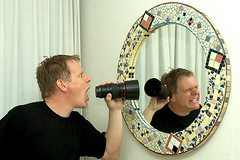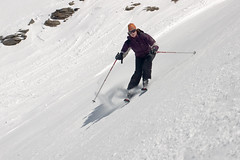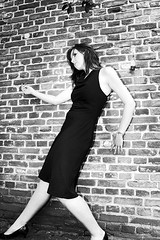 Human age keeps puzzling me, you know. Told you before that kids take a full cat’s life to stand on their own feet. But adults are strange too. They do have an age, but it makes no sense. Some guy are –say- 20 and leave the impression of an old man. Others are going on 40 and are young and playful like a one-year-old. Cat, that is. It made me wonder, you know? And again, I chose the philosophical approach.
Human age keeps puzzling me, you know. Told you before that kids take a full cat’s life to stand on their own feet. But adults are strange too. They do have an age, but it makes no sense. Some guy are –say- 20 and leave the impression of an old man. Others are going on 40 and are young and playful like a one-year-old. Cat, that is. It made me wonder, you know? And again, I chose the philosophical approach.Have you ever noted how a baby only recognizes the 20 cm around it? One year later, it recognizes an entire room and at 4, a kid has some knowledge of the street it lives in. At 16, a kid uses its entire city or region to live in. Adults spread their activities more and more, some travel around the world as if distances don’t exist. And then, by the end of their lives, they start retreating. In their villages at first, then in their nursing homes. At last, they will stay in their room, and even hardly get out of bed.
It’s similar with friends. A baby has no friends, a toddler may have a couple, and a kid has a classroom full. In college and university, new friends are made easily and some working adults have so-called social networks. Then comes the parenting stage, again meeting new people, parents to other kids, and so on and so on. But then, let’s look at the elderly again. Their old friends die one by one, and they hardly ever make any new ones. The number reduces, call it countdown if you want to.
The pattern is clear. Both in space and in number of friends. People start with nothing. And they end up with next to nothing too. In between, people have lots of space and friends. Low at one end, low at the other end, high in the middle. Doesn’t that sound like some kind of parabola? And parabola’s have a top bit, right? At this point, the increase turns into a decrease. And that, rather than your age, defines whether you’re getting old or not.
Let me give you the bottom line: As long as the size of your world and your social network increase, you’re young. Once they start stabilizing, start to worry. You’re heading towards the downward sloping part. Your world gets smaller, the number of friends decreases: you are getting old, no matter what your age is.
It’s just a matter of logic.





